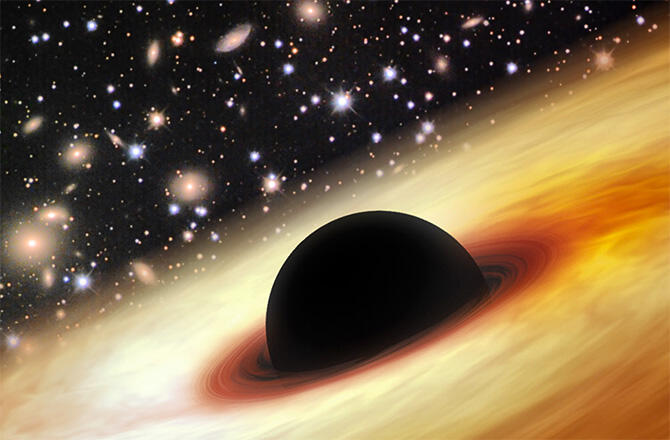Astronomers have found a monster black hole, some 17 billion times more massive than the sun, in a modestly sized galaxy, raising suspicions that supermassive black holes may be much more common than originally thought.
Black holes are regions so packed with matter that not even photons of light can escape the gravitational warping of space.
The largest black hole found so far is about 21 billion times more massive than the sun. In comparison, the black hole at the center of the Milky Way galaxy, named Sagittarius A, is about 4 million time the mass of the sun.
The newly discovered black hole is in a somewhat isolated and average-sized galaxy known as NGC 1600. It was studied as part of an ongoing survey of the 100 most massive galaxies within about 300 million light-years from Earth.
https://www.youtube.com/watch?v=_7shU4uxljM
“Probably all of these galaxies harbor black holes in their centers. The question we would like to answer is how massive the black holes are, and whether there are more hefty ones like the one we found in NGC 1600,” University of California Berkeley astronomer Chung-Pei Ma wrote in an email to Discovery News.
“We don’t know right now if NGC 1600 is the tip of an iceberg, or a rare find, perhaps as a result of an unusually voracious phase during its youth,” she added.
However it came to exist, NGC 1600’s black hole is an oddity, roughly 10 times bigger than what astronomers would expect a galaxy of its size to host.
“The relationship between black holes and their host galaxies is more intricate and depends on a black hole’s feeding history in addition to location. Nurture and nature therefore both matter for the ultimate size of these black holes,” Ma said.
Typically, supermassive black holes account for about 0.2 percent of its host galaxy’s mass. NGC 1600’s black hole is 2.1 percent of the galaxy’s mass.
One idea is that NGV 1600 is a “fossil” system, astronomer Jens Thomas with Germany’s Max Planck Institute for Extraterrestrial Physics wrote in an email to Discovery News.
In contrast to other averaged-sized galaxy groups, which typically contain a family of a few, similarly massive galaxies, the NGC 1600 group may have formed in a slightly different way, merging together into a single massive galaxy very quickly, Thomas said.
“This would mean that the environment of NGC 1600 is ’empty’ because the evolution was faster and the surroundings have already been consumed,” Thomas added.
Another explanation for NGC 1600’s black hole is that it actually is a pair.
“Our current data cannot tell if it’s a singlet or a twin,” Ma said. She hopes planned low-frequency gravitational wave surveys may be able to solve the mystery.
Source: Discovery











